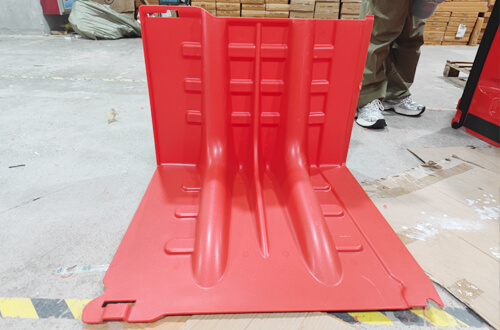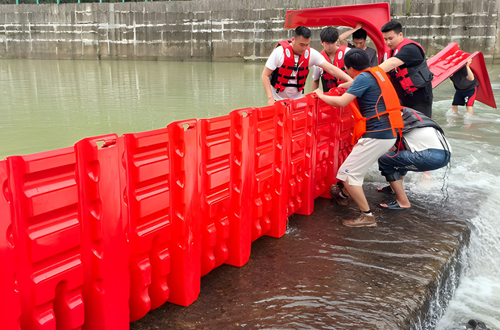
Global warming has resulted in an increase in extreme weather events, with heavy rainfall-induced floods posing significant threats to human life and property. The flood control sub-embankment, also referred to as a temporary embankment, is constructed atop the main embankment adjacent to the water surface to prevent overflow during flooding. This type of on-site assembled sub-embankment is typically designated for national, river basin, or provincial and municipal emergency response equipment reserves; it may also be directly allocated to mobile rescue teams within provinces and municipalities.
These structures are generally erected along both banks of rivers to effectively block potential flood overflows. In anticipation of flooding events, communities will construct these sub-dikes to mitigate flood impacts and safeguard agricultural land and urban areas.
The benefits of the flood control sub-embankment are evident. Firstly, it significantly reduces damage caused by floods; when inundation occurs, these barriers can be rapidly deployed to create a protective barrier against encroaching waters threatening cities and farmland. Secondly, they enhance public safety; during flooding incidents, individuals can utilize these dikes as refuge from rising waters thereby minimizing casualties. Furthermore, the flood control sub-embankments help protect property by containing floodwaters outside riverbanks which prevents damage to surrounding infrastructure such as buildings and crops while mitigating economic losses.
Due to their mobility, rapid installation capabilities across various soil types, and cost-effectiveness, flood control sub-embankments have become essential tools in emergency flood management.

점점 더 심각해지는 기후 변화와 기상이변에 직면하여 도시의 능력은 ...

재료 및 구조: 1. 우수한 소재: 일반적으로 ABS 플라스틱으로 제작되는 이 소재는 ...

알루미늄 홍수 장벽 일반적으로 압출에 의해 6063 알루미늄 합금 (측면 기둥 포함)으로 만들어집니다. D...

알루미늄과 ABS 홍수 장벽에는 재료, 성능 측면에서 상당한 차이가 있습니다.

고품질 교통 가드레일 고속도로 가드레일이 고속도로 안전에 중요한 이유는 무엇일까요? 1.안전 강화...